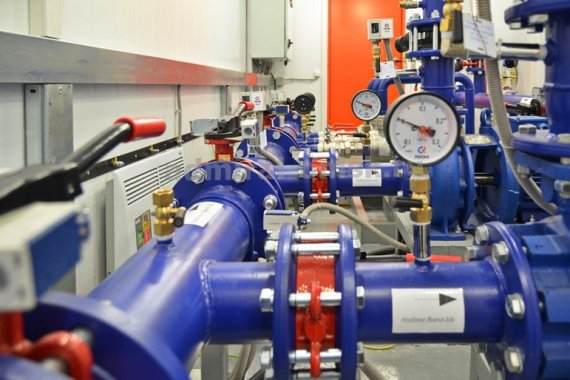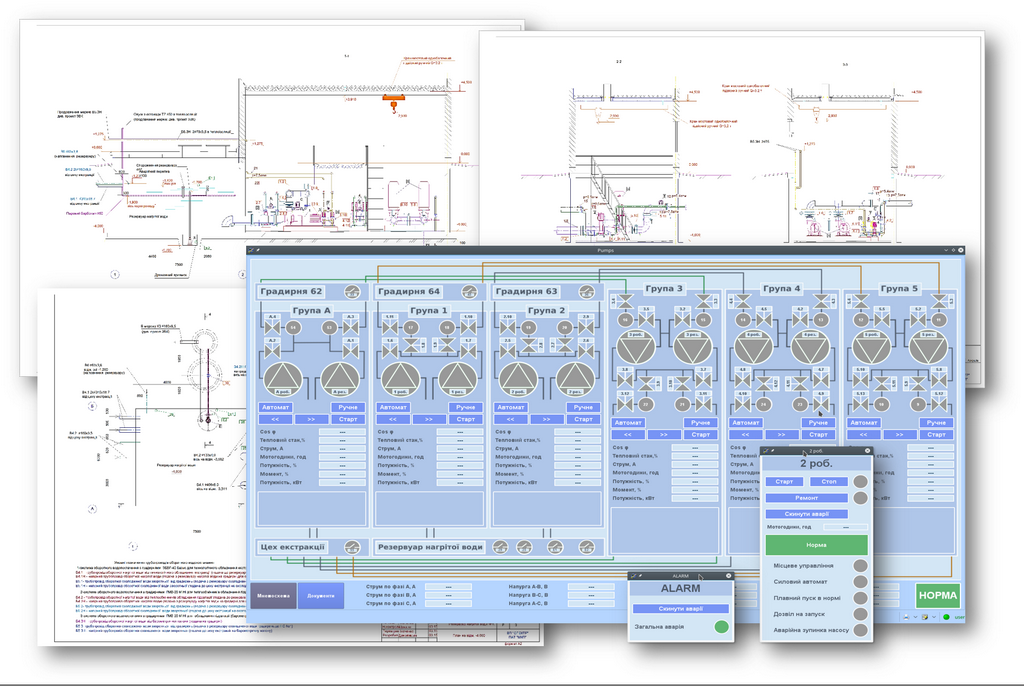Automation of water pumping stations

The INNOVINNPROM company performs work on the automation and dispatching of water channels and objects (wells, metering units, CNS, water pumping stations, highways and networks, sewage treatment plants and other objects) "on a turnkey basis" from design to implementation.
Automation of pumping stations makes it possible to increase the reliability and continuity of water supply, reduce the size of regulating tanks, reduce labor costs and operating costs. At pumping stations, the following are automated: start and stop of pumping units and auxiliary pumping units; control and maintenance of specified parameters (for example, water level, supply, pressure, etc.); reception of parameter pulses and transmission of signals to the control room.
The experience of operating automated pumping stations shows that automation costs pay off within 2 years at most.
The use of automated control of pumping stations provides significant advantages:
- reduction in the capacity of water tower tanks, in some cases their complete absence, as well as reduction in the capacity of collection tanks due to an increase in the frequency of soft start and stop of units;
- reduction of operating costs due to a reduction in the number of service personnel, as well as costs for heating and lighting premises;
- increasing the service life of equipment and devices due to the timely shutdown of units in the event of malfunctions in their operation;
- reduction of the construction cost, as the equipment is concentrated on a smaller area of the machine room and there is no need to build household and auxiliary premises;
- concentration of management of several automated pumping stations in one point, which makes the system more flexible and reliable;
- exclusion of staff participation in technological operations taking place in unsanitary conditions.
In addition to general application equipment (contactors, magnetic starters, switches, intermediate relays), special control and monitoring devices are used to automate pumping plants, for example, level control relays, centrifugal pump filling control relays, jet relays, float relays, electrode level relays, various pressure gauges etc. A variety of sensors are used to monitor the parameters of the pumping station, which will convert the monitored value into an electrical signal that is sent to the executive mechanism.
The main purpose of using automated control systems (ACS) in pumping installations is to match the mode of operation of the pumps with the mode of operation of the water supply or sewage network. The range of changes in water consumption is quite wide. To monitor these changes, it is necessary to continuously adjust the operating mode of the pumping unit. By adjusting the rotation frequency of the pump, its operating parameters are brought into line with the mode of operation of the water supply or sewage network. To change the frequency of rotation of the pump, it is equipped with an adjustable drive, that is, the electric motor of the pump is connected through a frequency converter. The value of the rotation frequency of the pump, at which it should work at a particular moment in time, is determined by the automatic control system, that is, the mode of operation of the pumping unit.
An example of automation of a water pumping station of an oil extraction plant:



 Glyanec
Glyanec